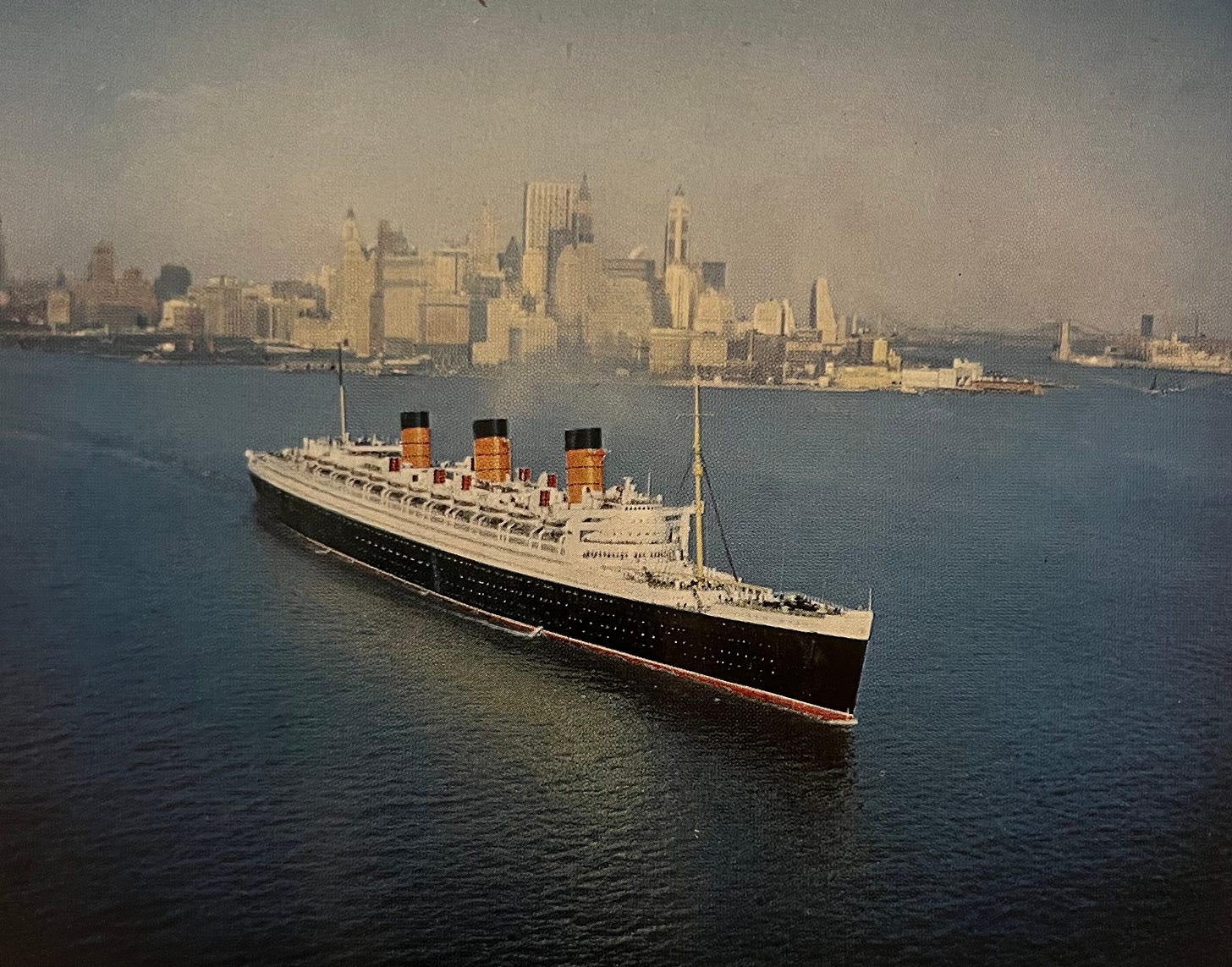Last month I gave you the first part of what is turning out to be a mammoth feature about the war service of one of the most beautiful ships ever built: Cunard White Star’s Queen Mary. I looked at the initial work the ship carried out transporting troops from Australia, what life was like on her, and about some of the shenanigans men (and women) got up to for the month or so they were on board…
Turns out, these lengthy trips were not sustainable. The last big trip she made is known as ‘The Long Voyage,’ because it continued uninterrupted for four months, and covered some 40,000 miles. En route, the Mary sailed all around the coast of Africa, stopping in at Arabia, then the East Indies, then making for Australia. One crew member recalled issues with discipline amongst troops on one crossing: ‘We took the Australians back from the Mediterranean… they were a tough bunch. One or two of them were put in jail on the ship because they was fighting with the officers… there was always punch ups…’ Even boxing matches didn’t dispel all the frustration and pent up energy aboard. ‘These troops would get in the ring and start fighting with the referee, and a lot of times it was a captain! But the biggest bone of contention was the crew, who grew more and more restless the longer they were away from home. There were disciplinary issues, fights and other problems, resulting in messages being dispatched to the government ‘warning the authorities that unless the ship returned to a home port fairly soon there would be serious trouble.’
From now on, the Queen Mary was going to be primarily put back on her traditional route in the North Atlantic, concentrating on transporting American troops to war. In all, she would make 28 round trips, mostly from New York to Gourock, in the mouth of the Clyde, with occasional diversions to Halifax in Nova Scotia.
None of the concerns about her safety at New York had gone away, and for that reason, security was tight when the Mary docked in the city again. As many as 750 military policemen were detailed to guard the ship. Apparently, the commanding officer gave his men these words of inspiration: "You begin to-day to guard a ship so vital to the united nations that if it meant choosing between your safety and that of the vessel, I would necessarily sacrifice every man in this company.” Four officers and 135 men worked in six hour shifts, and if that sounds over the top, consider this:
‘There were numerous alarms. On one occasion beer-bottle tops were found stuck in the nozzles of the fire-hoses. On another occasion when the lifeboats were lowered into the water to test them a number began to sink. It was found that holes had been bored into the bottom of them.’
Of course, the real danger was when she set sail. Pennsylvania native Henrietta Harkness was a nurse, and when she embarked aboard Queen Mary in 1943, she remembered a safety briefing from the captain for her little group of women, probably more for comedic effect: ‘He said he had made many trips and they’d been safe, but if any one goes overboard, we’re not going to stop to pick them up, so be careful.’ She also remembered the incessant zig-zagging as the ship dodged potential submarines. ‘The last day… we were more or less hanging on to our berths, we couldn’t eat, couldn’t do anything.’ Californian Archie Maltbie remembered what was later said to be a pointed attempt to dodge a submarine track on the run into Scotland in 1944:
‘[She] made a turn, and I mean she made a really sharp turn and we all went zipping across the decks. As a matter of fact, in the big ballroom somebody had pulled the grand piano out, and she went clear across that ballroom and smashed into the wall and wrecked it. So we came close to getting hit I guess.’
Keep reading with a 7-day free trial
Subscribe to Alex Churchill’s HistoryStack to keep reading this post and get 7 days of free access to the full post archives.



